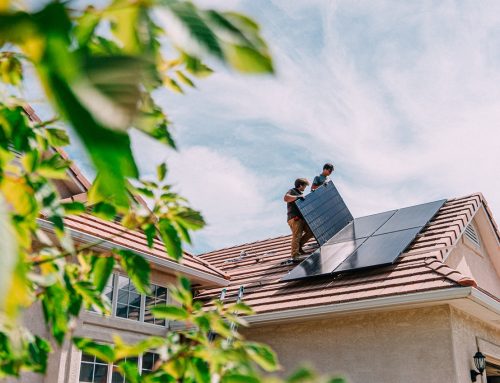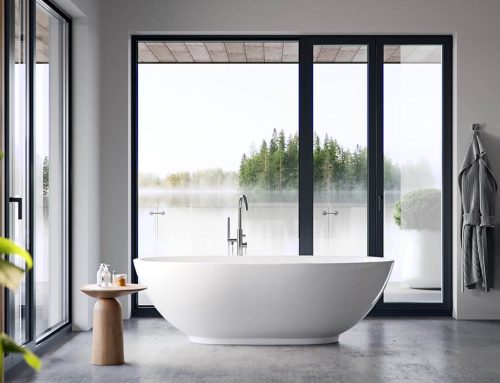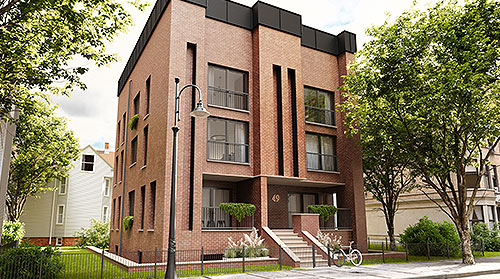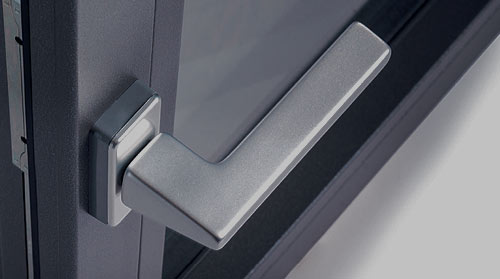Low-E (low-emissivity) is specialized glass that works like a thermal mirror, keeping heat inside during winter and reflecting solar heat away during summer while maintaining excellent visibility.
When paired with high-performance uPVC frames, it offers an ideal solution for homeowners needing higher energy efficiency standards, such as those required for passive houses. If you want to lower your energy bills or you’re looking for high-performance windows for your new home, we encourage you to go through the rest of this article.
What is Low-E Glass?
Low-E glass contains a special coating that selectively filters the different types of light that pass through your windows. This transparent coating allows visible light to enter your home while reflecting infrared (heat) radiation. The result is a window that helps maintain your home’s temperature regardless of outside conditions.
The coating works by managing the electromagnetic spectrum differently – it lets in the light you can see while controlling the heat you can feel. This selective filtering is what makes Low-E glass so effective at improving a window’s thermal performance.
For example, you can install large floor-to-ceiling windows in your living room and enjoy abundant natural sunlight without experiencing uncomfortable temperature increases, even on sunny days.
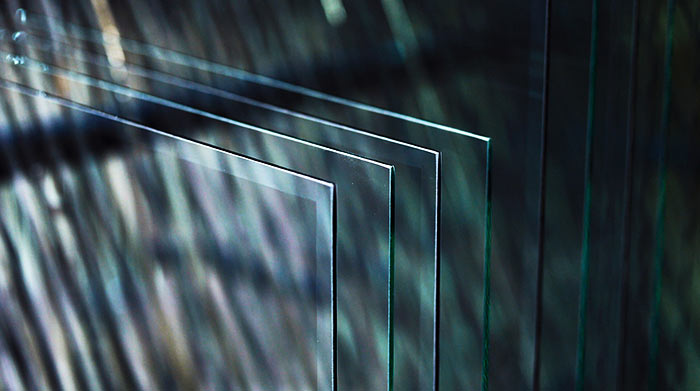
Two types of Low-E coatings
Soft-coat (Low-E2, Low-E3):
This type is applied after the glass is manufactured in a vacuum chamber where multiple layers of silver and other metals are deposited onto the glass surface. Soft-coat Low-E provides superior thermal insulation and is ideal for maximizing energy efficiency in most climates. This coating is typically applied to the interior surface of double or triple-glazed units for protection.
Hard-coat:
Applied during glass production while the glass is still hot, this coating is fused directly to the surface, making it extremely durable. Hard-coat Low-E glass is well-suited for cold climates where heating is the primary concern, as it allows some beneficial solar heat gain while still reflecting interior heat back into the room.
When choosing high-performance windows, the type of Low-E coating should match your local climate conditions and specific energy efficiency goals. Quality windows combine these advanced glass technologies with well-designed frames to create complete systems that maximize comfort and energy savings.
Benefits of Low-E Glass in uPVC Windows
Many homeowners choose uPVC windows with Low-E glass because they want a tangible return on their investment. If you’re on the fence about whether these premium windows are worth the cost, consider these benefits that can justify the investment:
Reduces Energy Loss by Up to 50%
Low-E glass reflects interior heat back into your home during winter and reflects exterior heat away during summer. When combined with multi-chamber uPVC profiles, this technology creates a powerful thermal barrier with U-Factors as low as 0.13-0.29 in OKNOPLAST’s systems.
Maintains Consistent Indoor Temperatures
By eliminating temperature fluctuations near window areas, Low-E glass helps maintain even temperatures throughout your home. This reduces strain on your HVAC system, leading to lower energy bills and extended equipment life.
Blocks Harmful UV Rays
Low-E glass filters out up to 99% of ultraviolet radiation without sacrificing natural daylight. This protection prevents furniture, flooring, and fabrics from fading or deteriorating due to sun exposure.
Improved Comfort
The thermal efficiency of Low-E glass combined with quality uPVC frames reduces drafts in winter and heat radiation in summer. This makes areas near windows much more comfortable and allows you to fully utilize your living space.
Condensation Control
By maintaining warmer interior glass surface temperatures in cold weather, Low-E glass helps reduce interior condensation. This prevents moisture-related problems like mold growth and water damage to window frames and surrounding walls.
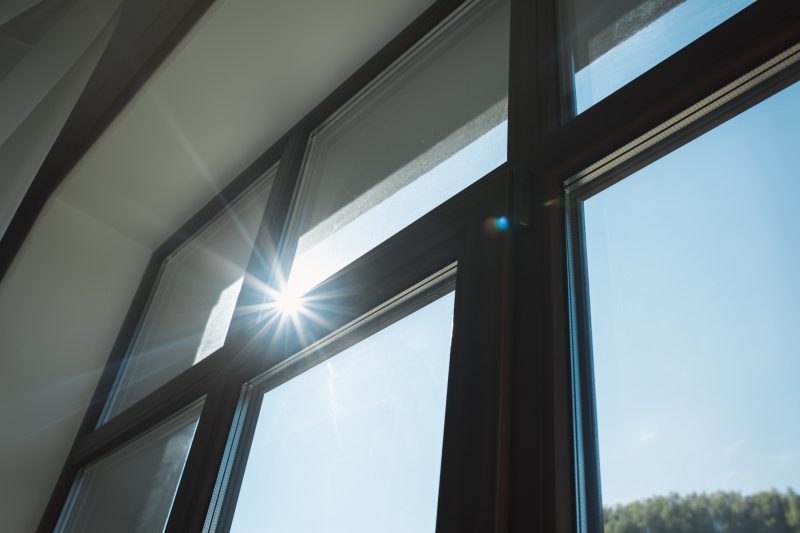
How does Low-E glass perform in extreme weather?
Low-E glass is designed to manage heat transfer through the window pane, helping your home stay comfortable in both hot and cold conditions. When combined with well-insulated frames like OKNOPLAST’s multi-chamber uPVC systems, it becomes a smart, climate-ready solution.
In cold climates
The coating reflects indoor heat back into the room instead of letting it escape through the glass. This helps maintain warmer interior surfaces, improves comfort near windows, and reduces heating costs. In colder regions, combining this with triple glazing can bring thermal performance up to passive house levels.
In hot climates
The same coating works in reverse—blocking solar heat from entering while still allowing daylight through. This lowers cooling demand, especially in homes with large glazed areas. Depending on your region, the SHGC (solar heat gain coefficient) can be fine-tuned to let in just the right amount of solar energy.
In storm-prone areas
Thermal performance doesn’t need to come at the cost of strength. When built into OKNOPLAST’s hurricane-rated systems, windows maintain their insulation value while meeting structural standards for high-wind zones. Certain configurations are tested to withstand conditions comparable to category 5 hurricanes.
Energy efficiency in Tilt and Turn windows
Tilt and Turn windows seal tightly when closed, helping reduce heat loss and improve comfort throughout the year. OKNOPLAST’s uPVC systems, like PIXEL and PAVA, use multiple compression gaskets to minimize air leakage and improve insulation around the frame.
For controlled ventilation, use the effiAIR system. This feature keeps the window locked while allowing a small, ¼-inch opening around the edges—just enough for fresh air to circulate without causing major temperature drops. It’s a simple way to air out a room while maintaining energy efficiency.
In summer, the tilt position can help with natural cooling. In winter, the full seal works together with Low-E glass and multi-chamber frames to keep heat inside. The result is a well-balanced system that supports year-round energy savings—especially in homes that prioritize comfort and thermal performance.
If you’re looking for new windows that combine the full benefits of Low-E glass with the versatility of tilt and turn technology, reach out to our team. We’ll help you find a solution that brings comfort, efficiency, and reliability all year round.
Continue Reading
Products.

